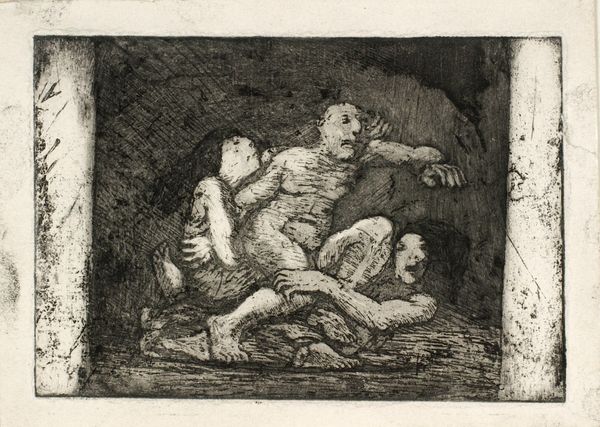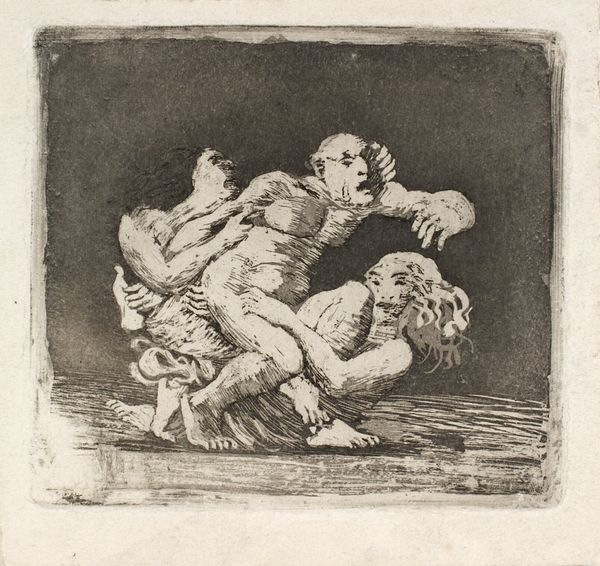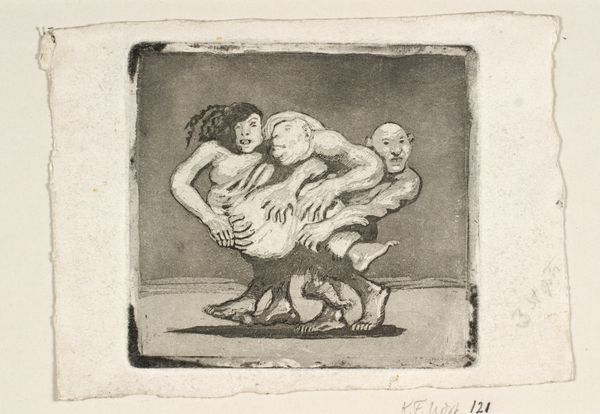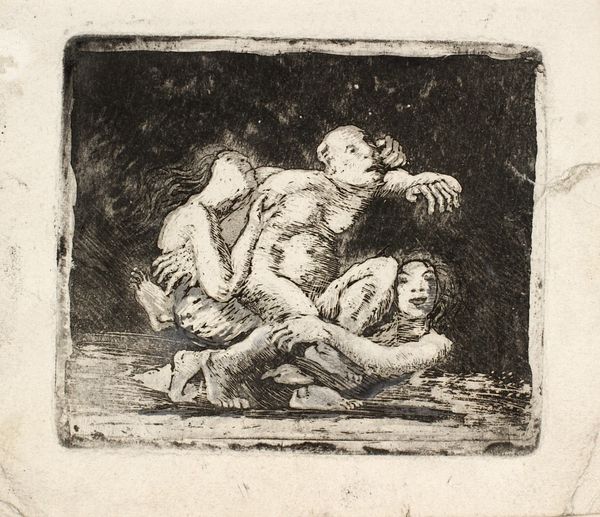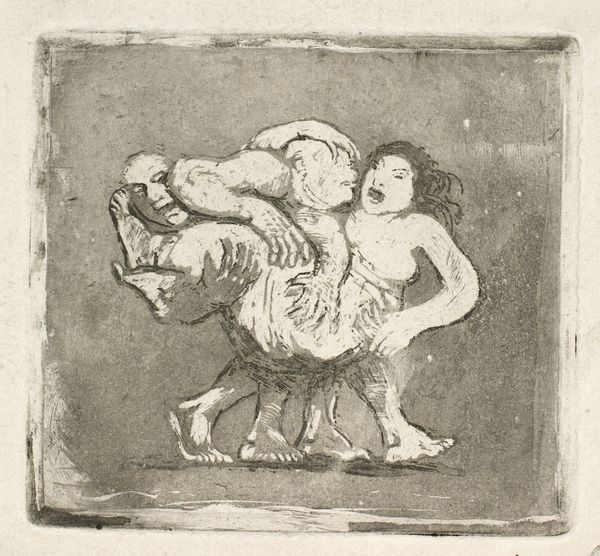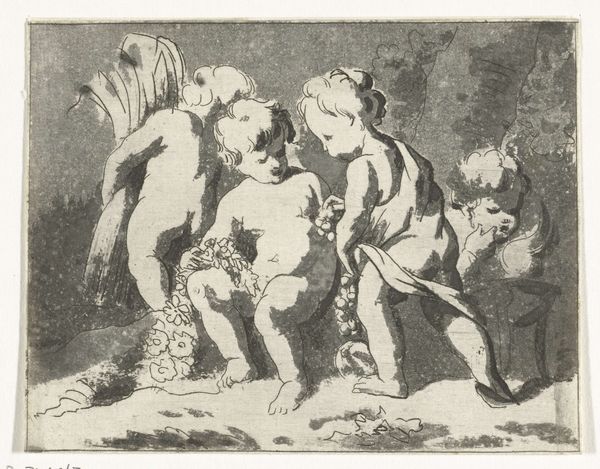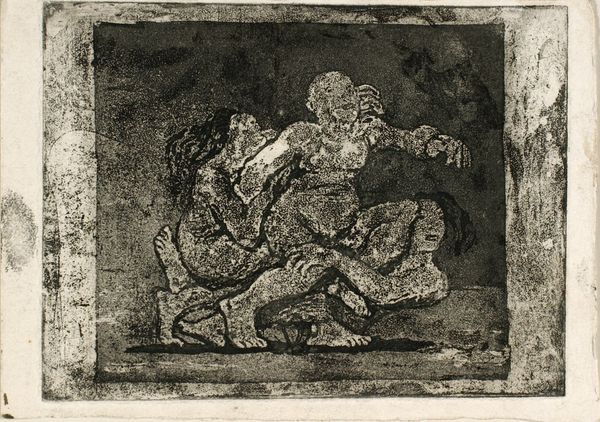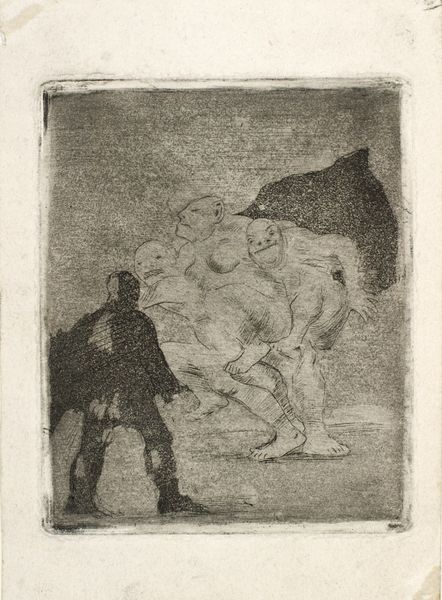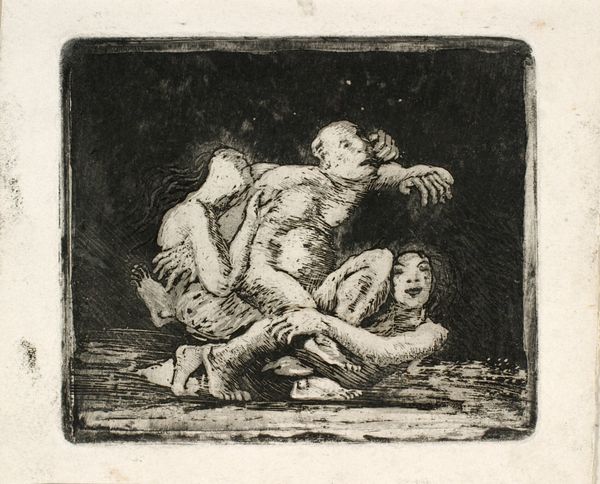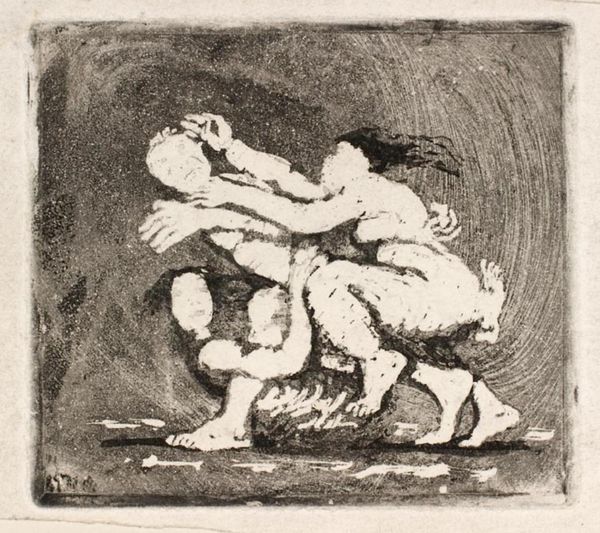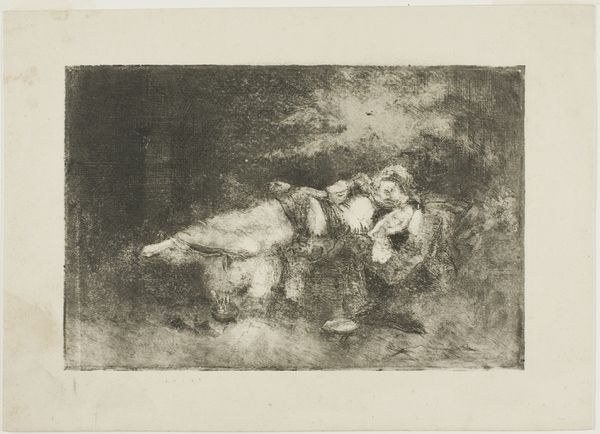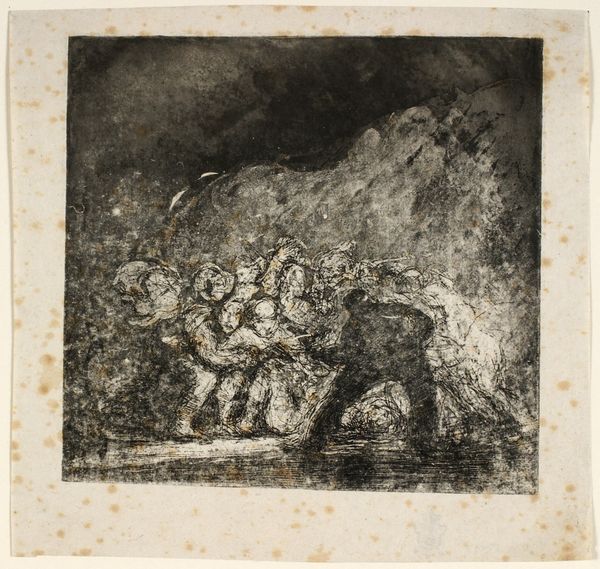
aquatint, print, etching
#
aquatint
# print
#
etching
#
figuration
#
symbolism
#
genre-painting
#
erotic-art
Dimensions: 130 mm (height) x 140 mm (width) (plademaal)
Curator: Here we have "To kvinder slås om en mand", or "Two Women Fighting over a Man" by Oluf Hartmann, created around 1906. It's a striking print, combining aquatint and etching techniques. Editor: It’s raw. There’s a frenzied energy in the scratches, almost like visual shouting. I can practically hear the cries emanating from this small piece. Curator: Absolutely, and in viewing this artwork through a contemporary lens, we might question the representation of conflict and gender dynamics it presents. How does it reinforce or challenge societal norms concerning female relationships and male objectification, specifically in the art world, during the early 20th century? Editor: Visually, my eye keeps going to the man at the center, doesn’t it? But he is rendered almost as a blank space, which ironically puts the two women into stark contrast. It feels very performative, wouldn’t you agree? His raised arm and open stance suggest conflict or drama. One can look into symbols to further contextualize the relationship dynamics, perhaps a battle of equals, but about what? Curator: The historical context is essential; consider the rise of feminist movements coinciding with this era. Did Hartmann consciously engage with or subvert these developing ideologies in the graphic arts? Are we merely reinforcing established power structures simply by observing and analyzing this struggle, or can such observations incite change? Editor: Hartmann is exploring deep-seated human emotions: jealousy, desire, and the primal urge to compete for attention or resources, all universal, almost archetypal representations here. His symbolic gestures hint to both classic struggles, yet feels incredibly contemporary. Curator: Right, considering these prints are often more accessible than painting to a wide array of the population and their use as political tools; it allows the imagery and their implicit values to penetrate deeper into the population and popularize particular narratives. Editor: Seeing Hartmann's print helps clarify how those emotions—and power struggles—become visually encoded. It gives historical roots and weight to our modern iconography of relational competition. It shows this drama is anything but modern. Curator: Precisely, art helps us examine historical antecedents to contemporary culture, inviting us to interrogate assumptions around conflict and competition. Editor: It certainly leaves a lot to consider on how representation shapes us as a society through visual cues and repetition, from his etching to now.
Comments
No comments
Be the first to comment and join the conversation on the ultimate creative platform.
